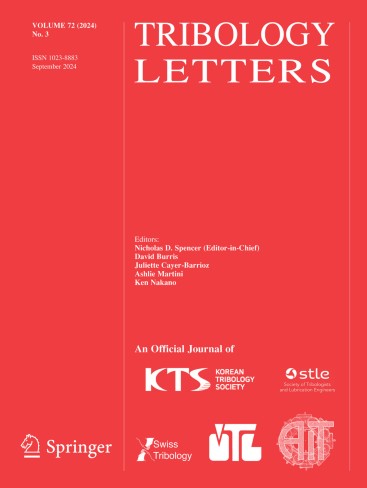Lubrication Performance Under Electrical Regulation: Investigating the Mechanism of Graphene/Ionic Liquid Composite Materials
Abstract
To delve into the mechanisms of lubricating additives in electrically charged environments, this study utilizes a non-covalent modification method combining N-butylpyridinium tetrafluoroborate ([BPy]BF4) with multilayer graphene (MG) to create graphene/ionic liquid (G/IL) composites. These composites were tested as lubricating additives in polyalphaolefin 40 (PAO40) using the UMT-2 experimental platform to assess their performance and electrical regulation mechanisms. Results demonstrated that G/IL composites significantly enhance lubrication and electrical stability. The study discovered that varying the current’s intensity and polarity substantially influences ion concentration and Zeta potential at the interface, reducing the electroviscous effect and facilitating the formation of an interfacial adsorption film. The interplay of these mechanisms greatly optimizes the interface condition. Additionally, real-time contact resistance data indicated a correlation between friction coefficient and contact resistance, validating the synergistic effect’s impact. This research not only clarifies the complex action mechanisms of lubricating additives in charged conditions but also offers critical insights for designing highly efficient lubricating materials.


 求助内容:
求助内容: 应助结果提醒方式:
应助结果提醒方式:


